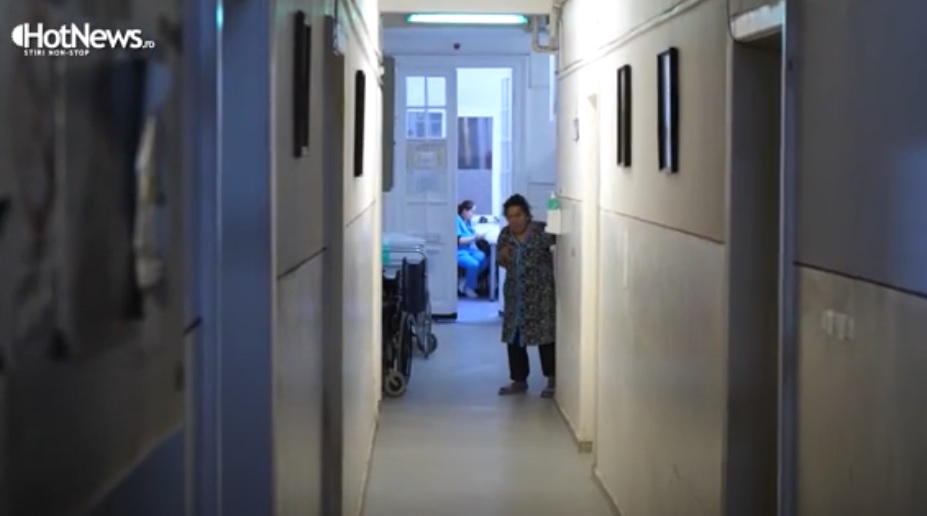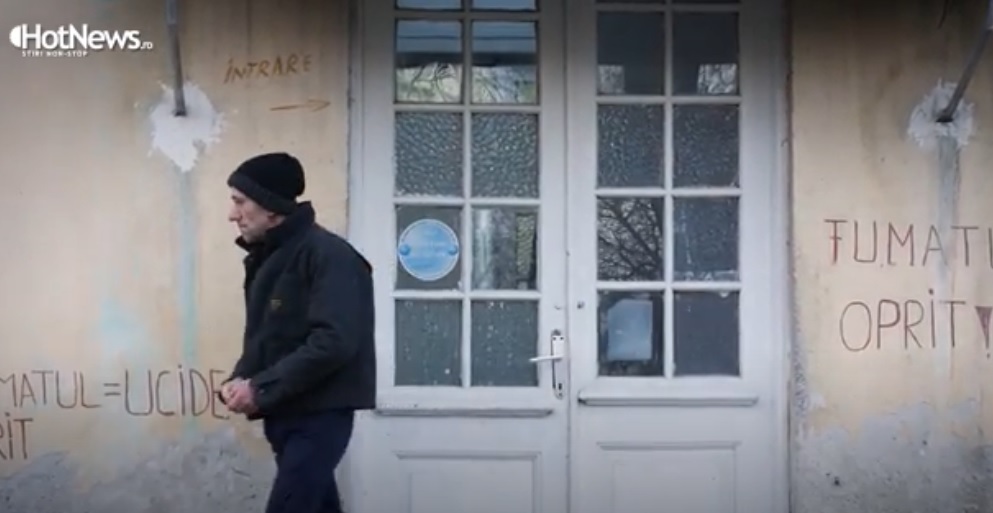
The Marius Nast Institute in Bucharest is a place where the most serious cases of lung diseases from all over the country, such as tuberculosis, lung cancer, pneumonia or cystic fibrosis, are admitted. Patients from all over the country turn to the doctors of “Marius Nasta”, but the living conditions in the hospital lag far behind the quality of medical care, the institute’s employees have been saying for years. After years of waiting, the Zerlandi section of the Marius Nast Institute – a 130-year-old building donated to the state by the Zerlandi boyar to house poor people – has made the final list of 27 hospitals to receive funding from the PNRR. It will be rebuilt from scratch.
The Marius Nast Institute is the most important lung disease hospital in Romania. It operates from two offices – one in Chausseau Vilor and one on Calea Sherban Vode, known as “Zerland”, after the nobleman who donated the building to the Romanian state 130 years ago.
Zerlandi was included in the final list of 27 hospitals that will receive funding from the PNRR, published by the Ministry of Health on January 11. The deadline for the implementation of projects – completion of construction and equipment – June 2026. Financial contracts must be signed during this period: the end of January – the beginning of February, according to the Ministry of Health.
Zerlandi, whose history is 130 years old
Location at Calea Șerban Vodă no. 189, known as the Zerlendi headquarters of the Marius Nasta Institute of Pneumophthisiology, dates back to 1894, the year the nobleman Zerlendi donated Sector 3 “Blue” of the “Bucharest Commune” City Hall by will dated no. 18426, a plot of land for the shelter of low-income groups of the population. At the time of the donation, there were several buildings on the land designated for this purpose, which were later renovated by the city hall, says Dr. Beatrice Mahler, manager of the Marius Nasta Institute of Pneumophthisiology.
In 1916-1917, Theodore Krikoriou built a new building with the purpose of a shelter – “a shelter for the old, the infirm, the poor and people of a lower level.”
In 1918, the Society for the Isolation of Tuberculosis Patients, led by Professor Irimescu, asked the City Hall to hand over these ruins for repair and improvement for tuberculosis patients and the poor, with 40 beds.
Since 1918, the Society for the Isolation of Tuberculosis Patients has been renovating the premises with funds received from the mayor’s office of the “municipality of Bucharest” (from 500,000 to 1,000,000 lei/year), as well as with funds collected by the Society through the construction of new pavilions, increasing the facility’s capacity to 200 seats. The design and construction of the current central pavilion stretched over time, its current form dates back to the 1930s.
After 1920 and until the Second World War, the hospital continued to be an avant-garde unit in promoting progressive ideas regarding the organization of the anti-tuberculosis fight in Romania and in the training of specialized personnel.
To confirm this idea, in 1935, Cornel Adamestianu from Professor Jakubovich’s clinic performed the first Jacobeus operation in “Zerlendi”, laying the foundation stone of tuberculosis surgery in Romania.
In 2020, the hospital closed its doors in anticipation of a new building.

Beatrice Mahler, pulmonologist and head of the Marius Nast Institute / Photo: Inquam Photos – George Kaelin
The “adventure” of rebuilding Zerland’s headquarters began 4 years ago
The “adventure” of Zerlandi begins 4 years ago, when Beatrice Mahler, then the new head of the hospital, began to appeal to the Ministry of Health, in which she drew attention to the high degree of deterioration of the Zerlandi building, which is almost 130 years old, and demanded its urgent consolidation.
After all, then the Ministry of Health came to the conclusion that a new house can be built from scratch, instead of combining a more than 100-year-old one, and the costs will be the same or even lower: “They said then that it would be more expensive. effective for recovery. This forced us to start the necessary procedures for the construction of a new hospital. We conducted a preliminary feasibility study that was approved by the Ministry of Health in early 2020, just before the start of the pandemic. In August 2020, due to the lack of adequate hospitalization facilities, the Public Health Authority decided to close this office and basically after that we started steps to do the absolutely necessary feasibility study to proceed procedurally and in the right steps, that this is construction,” Beatrice Mahler says today.

Marius Nast Institute / Photo: Inquam Photos – Octav Ganea
After that, a discussion took place in the Ministry of European Funds with Minister Marcel Bolosh, at the time when the directions of organization and funding in PNRR were being structured. For the first time, the Minister of European Funds communicated with the heads of hospitals, who are used to periodically communicating only with the Ministry of Health, recalls Beatrice Mahler. At this meeting, Beatrice Mahler and her colleagues from other hospitals were asked if they had mature, feasible projects that could be funded through the PNRR and were encouraged to sign on to these projects.
On the other hand, all this action regarding the construction of a new hospital for tuberculosis patients was also the result of repeated discussions and meetings with representatives of the World Health Organization, with the assistance of which the Marius Nasta Institute, together with the Ministry of Health, restructured and continues to restructure aid to tuberculosis patients, says Beatrice Mahler: “And even if the number of tuberculosis cases is clearly declining, which is good, it was still necessary to have a unit at the national level that could provide care for tuberculosis patients for the next decades, which we hope will fewer and fewer, but which will need to be managed, because in every country there is such an institution where patients are hospitalized.”
In Western Europe, these departments for the treatment of tuberculosis patients are extremely well structured in terms of patient care, infection control, and laboratory diagnostics. “Things we took into account when we designed the structure of this new hospital.”

Zerlendi site until closing for patients in 2020 / Video shooting by HotNews.ro
“Colleagues who have retired, but have worked here for many years, want to live to see the new building”
At the Marius Nast Institute, after a long wait, the news that the Zerlendi headquarters was on the final list of hospital buildings to receive funding under the PNRR brought much joy.
“I can say that colleagues who have retired, those who have worked here for many years, want to live to see this building built,” says Beatrice Mahler.
“There were a lot of emotions at the Marius Nasta Institute, and I think there is a wait, which I hope will end the way we also want, with proper treatment conditions for our patients,” admits the head of the hospital.

Zerlendi site until closing for patients in 2020 / Video shooting by HotNews.ro
The new building will be the most modern tuberculosis treatment center in Romania, but will retain the area of the current buildings
The new hospital for tuberculosis patients will be of the highest standard, says Beatrice Mahler, adding that currently hospitals in Romania do not provide the ventilation system required for a hospital of this type.
In addition, this hospital will be exclusively for tuberculosis patients, while the rest of the hospitals where such patients are treated in Romania are mixed, explains Beatrice Mahler: “At the Marius Nasta Institute, we succeeded because we have a pavilion structure, we it was possible to divide already a year, in 2 years to divide the contours between phthisiology and pneumology. But the vast majority of hospitals have common buildings, different entrances, which does not create conditions for effective infection control, at least for a patient with a chronic respiratory disease. However, we are talking about different diseases, as we have seen in the case of COVID, when we talk about a respiratory disease, the circuits through which patients circulate must be completely different. And this hospital wants to cover the care of tuberculosis patients not only in Bucharest, but also in a large part of the country.

Zerlendi site until closing for patients in 2020 / Video shooting by HotNews.ro
Including the multidrug-resistant tuberculosis unit, which is currently located in the headquarters of Soseaua Viilor Hospital, will also move to this building, on a completely separate floor with separate circuits.
Although it will be a tuberculosis treatment center of the highest standards, the new building will retain the footprint of the current Zerlendi buildings, says Beatrice Mahler: “The height level will be basement, first floor and 3 floors, precisely to respect the height of the site. And we are trying to follow the trail precisely in order not to destroy the vegetation that is now in the courtyard of the institute.”
In practice, says Beatrice Mahler, the old buildings will be demolished, and two new buildings will be built on the site of these buildings, connected by a passageway at the level of the 1st floor: “Basically, the appearance of the building, if we look from above, will look like the letter L. There are houses and trees in the area, and since the park is very close, together with the architect we thought not to exceed the height level that the building currently has, very slightly, so that the building we are building does not exceed the tops of the trees, precisely to somehow preserve this aspect of the building that has a special history for Bucharest.”
Source: Hot News
Ashley Bailey is a talented author and journalist known for her writing on trending topics. Currently working at 247 news reel, she brings readers fresh perspectives on current issues. With her well-researched and thought-provoking articles, she captures the zeitgeist and stays ahead of the latest trends. Ashley’s writing is a must-read for anyone interested in staying up-to-date with the latest developments.